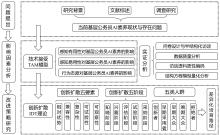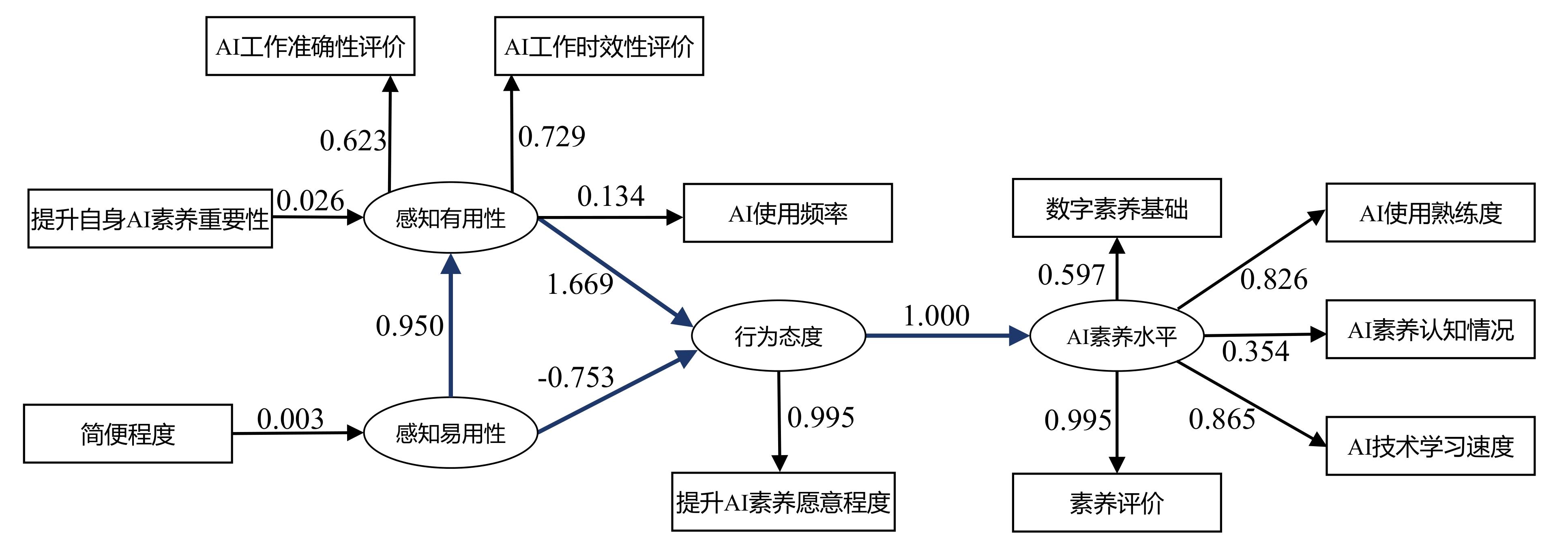| [1] |
张红春, 杨欢. 数字政府背景下的公务员数字素养框架: 一个概念模型[J]. 电子政务, 2023(1): 110-124.
|
|
ZHANG H C, YANG H. Digital literacy framework of civil servants under the background of digital government: A conceptual model[J]. E-Government, 2023(1): 110-124.
|
| [2] |
米加宁, 章昌平, 李大宇, 等. “数字空间”政府及其研究纲领: 第四次工业革命引致的政府形态变革[J]. 公共管理学报, 2020, 17(1): 1-17, 168.
|
|
MI J N, ZHANG C P, LI D Y, et al. “Digital space government” research program: Government reforming caused by the fourth industrial revolution[J]. Journal of public management, 2020, 17(1): 1-17, 168.
|
| [3] |
孟庆国, 王友奎, 陈思丞. 官员任期、财政资源与数字时代地方政府组织声誉建构: 基于2000万条省级政府网站数据的实证研究[J]. 公共管理与政策评论, 2022, 11(4): 20-37.
|
|
MENG Q G, WANG Y K, CHEN S C. Official tenure, financial resources and organizational reputation construction of local government in digital era: An empirical study based on 20 million provincial government website data[J]. Public administration and policy review, 2022, 11(4): 20-37.
|
| [4] |
孟天广. 政府数字化转型的要素、机制与路径: 兼论“技术赋能”与“技术赋权”的双向驱动[J]. 治理研究, 2021, 37(1): 5-14, 2.
|
|
MENG T G. Elements, mechanisms and approaches towards digital transformation of government: The dual drivers from technical empowerment to the state and society[J]. Governance studies, 2021, 37(1): 5-14, 2.
|
| [5] |
朱仁崎, 潘晓庆, 应验. 干部数字素养的指标构建与评估[J]. 中国行政管理, 2024(7): 29-38.
|
|
ZHU R Q, PAN X Q, YING Y. Research on the index construction, empirical evaluation and improvement suggestions of digital literacy of cadres[J]. Chinese public administration, 2024(7): 29-38.
|
| [6] |
魏巍, 李昕遥. 数字政府建设背景下基层公务员数字素养的概念内涵与提升路径[J]. 秘书, 2023(1): 84-94.
|
|
WEI W, LI X Y. Concept connotation and promotion path of grassroots civil servants' digital literacy under the background of digital government construction[J]. Secretary, 2023(1): 84-94.
|
| [7] |
马亮. 公务员的信息技术能力与数字政府建设: 中国城市的调查研究[J]. 广西师范大学学报(哲学社会科学版), 2020, 56(2): 34-44.
|
|
MA L. Civil servants' information technology capacity and the construction of digital government: Evidence from a nationwide survey of urban China[J]. Journal of Guangxi normal university (philosophy and social sciences edition), 2020, 56(2): 34-44.
|
| [8] |
李晓静, 冯紫薇. 数字中国背景下提升政务人员数字素养的国际经验与实践路径[J]. 湖南大学学报(社会科学版), 2024, 38(2): 145-153.
|
|
LI X J, FENG Z W. International experience and practical path in improving digital literacy of civil servants under the background of digital China[J]. Journal of Hunan University (social sciences), 2024, 38(2): 145-153.
|
| [9] |
LINDAUER S. AI literacy: A framework to understand, evaluate, and use emerging technology[R/OL]. [2024-04-23]. .
|
| [10] |
崔宇红, 赵锦涛. 人工智能素养视域下高校学生用户使用AIGC信息行为分析[J]. 农业图书情报学报, 2024, 36(11): 20-32.
|
|
CUI Y H, ZHAO J T. AIGC using behavior analysis from the perspective of artificial intelligence literacy[J]. Journal of library and information science in agriculture, 2024, 36(11): 20-32.
|
| [11] |
余维杰, 郑梦婷, 张颖. 中外人工智能素养框架研究[J]. 图书馆杂志, 2025, 44(6): 17-26, 129.
|
|
YU W J, ZHENG M T, ZHANG Y. Research on artificial intelligence literacy frameworks in China and abroad[J]. Library journal, 2025, 44(6): 17-26, 129.
|
| [12] |
LONG D R, MAGERKO B. What is AI literacy? competencies and design considerations[C]//Proceedings of the 2020 CHI Conference on Human Factors in Computing Systems. Honolulu HI USA. ACM, 2020: 1-16.
|
| [13] |
郭亚军, 寇旭颍, 冯思倩, 等. 人工智能素养: 内涵剖析与评估标准构建[J]. 图书馆论坛, 2025, 45(2): 42-50.
|
|
GUO Y J, KOU X Y, FENG S Q, et al. Artificial intelligence literacy: Connotation analysis and evaluation criteria[J]. Library tribune, 2025, 45(2): 42-50.
|
| [14] |
石峰, 李齐, 陈阳. 公务员人工智能素养: 内涵界定、外延解析与指标构建[J/OL]. 电子政务, 2025: 1-11. .
|
|
SHI F, LI Q, CHEN Y. Civil servant's artificial intelligence literacy: Connotation definition, extension analysis and index construction[J/OL]. E-Government, 2025: 1-11. .
|
| [15] |
PINSKI M, HOFMANN T, BENLIAN A. AI Literacy for the top management: An upper echelons perspective on corporate AI orientation and implementation ability[J]. Electronic markets, 2024, 34(1): 24.
|
| [16] |
SU J H, YANG W P. AI literacy curriculum and its relation to children's perceptions of robots and attitudes towards engineering and science: An intervention study in early childhood education[J]. Journal of computer assisted learning, 2024, 40(1): 241-253.
|
| [17] |
SMITH F, SADEK M, WAN E, et al. Codesigning AI with end-users: An AI literacy toolkit for nontechnical audiences[J]. Interacting with computers, 2024: iwae029.
|
| [18] |
DAVIS F D. Perceived usefulness, perceived ease of use, and user acceptance of information technology[J]. MIS quarterly, 1989, 13(3): 319.
|
| [19] |
ROGERS E M, SCHUSTER S. Diffusion of innovations, 5th edition[M]. New York: Free Press, 2003.
|
| [20] |
李琪, 殷猛, 孙乔. 我国消费者支付宝钱包使用意向研究: 基于TAM和IDT理论[J]. 大连理工大学学报(社会科学版), 2018, 39(1): 23-29.
|
|
LI Q, YIN M, SUN Q. Consumers' intention of using mobile alipay based on the TAM and IDT models[J]. Journal of Dalian University of technology (social sciences), 2018, 39(1): 23-29.
|
| [21] |
姚云浩, 栾维新. 基于TAM-IDT模型的游艇旅游消费行为意向影响因素[J]. 旅游学刊, 2019, 34(2): 60-71.
|
|
YAO Y H, LUAN W X. Factors influencing yacht tourism consumption behavior based on the TAM-IDT model[J]. Tourism tribune, 2019, 34(2): 60-71.
|
| [22] |
周沛, 马静, 徐晓林. 移动电子政务公众采纳影响因素的实证研究[J]. 图书情报工作, 2012, 56(5): 134-138.
|
|
ZHOU P, MA J, XU X L. Empirical study on factors influencing the public adoption of mobile E-government[J]. Library and information service, 2012, 56(5): 134-138.
|
| [23] |
郭高晶, 张欣欣, 胡广伟. 公务员数字胜任力: 概念内涵、分析框架及评价指标体系构建[J]. 科普研究, 2024, 19(5): 14-24, 101.
|
|
GUO G J, ZHANG X X, HU G W. Digital competency of civil servants: Conceptual connotation, analytical framework, and evaluation index system[J]. Studies on science popularization, 2024, 19(5): 14-24, 101.
|








